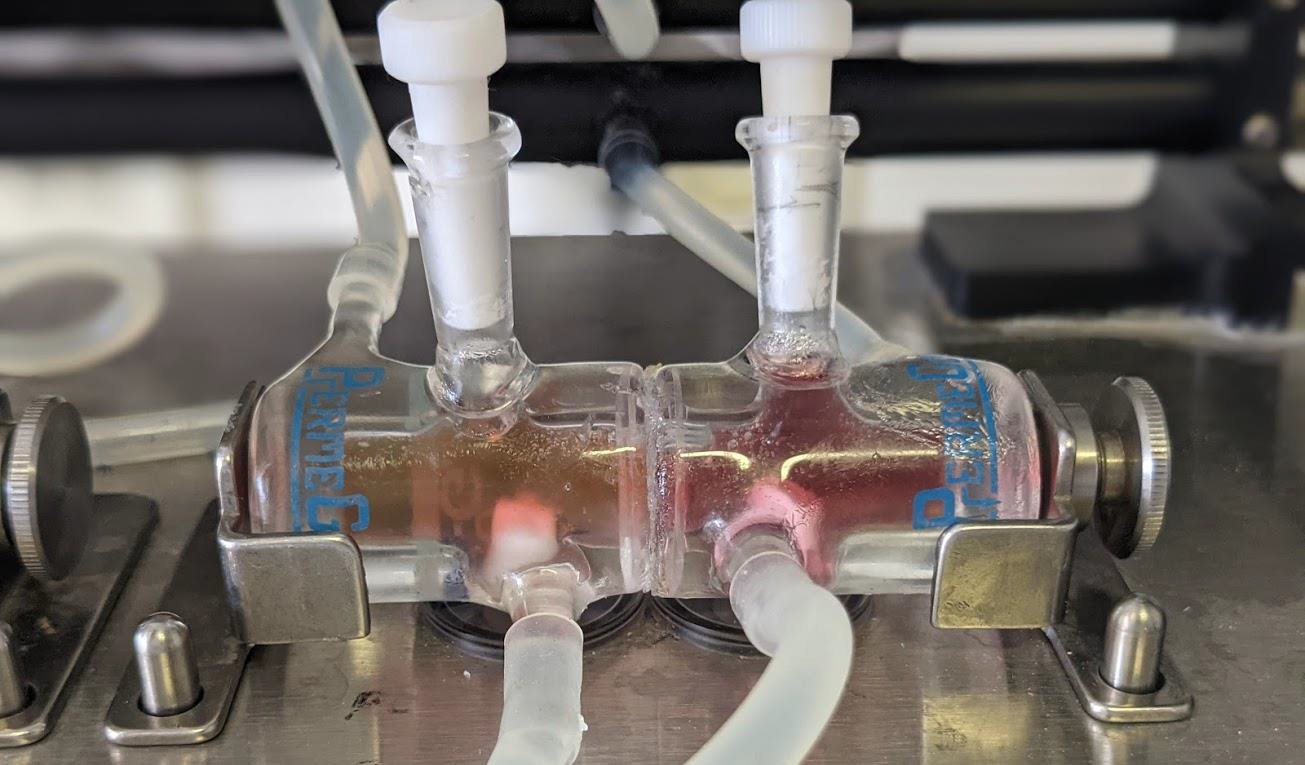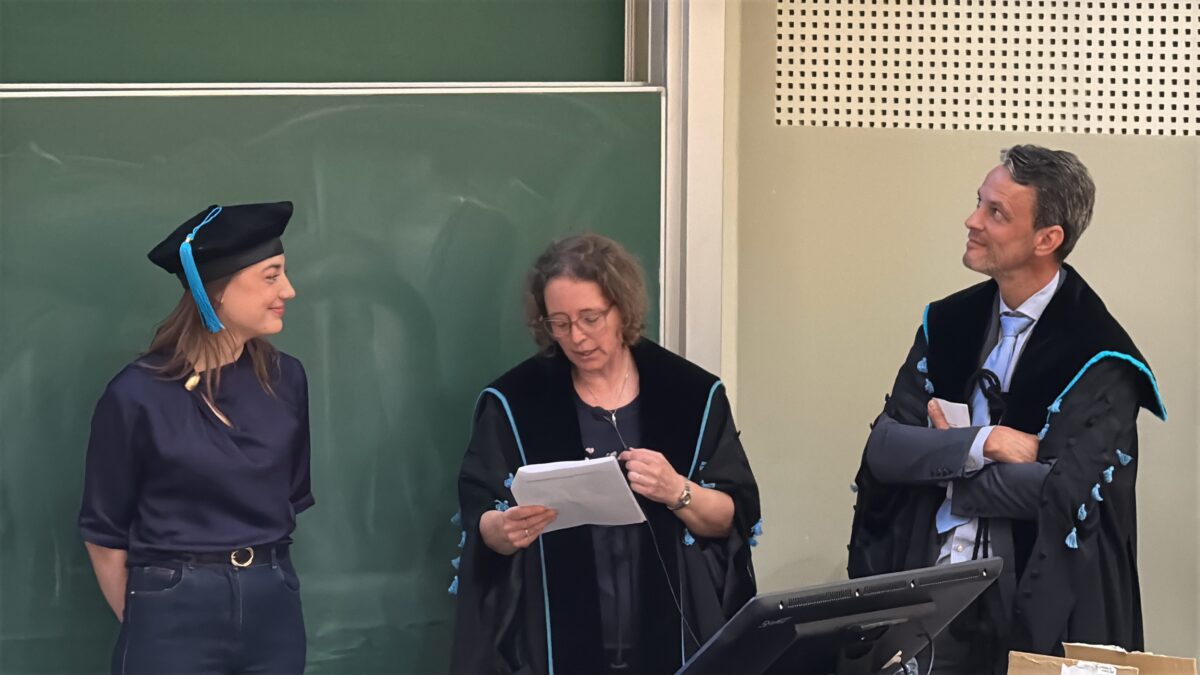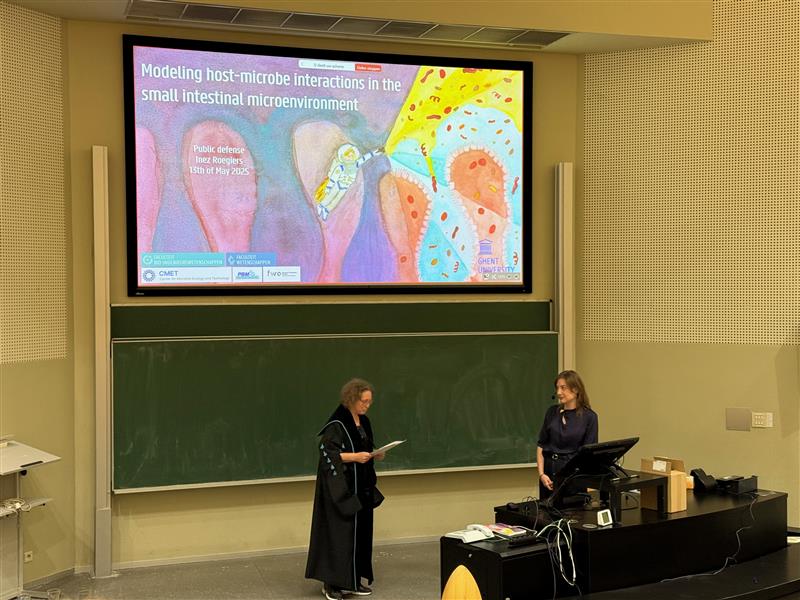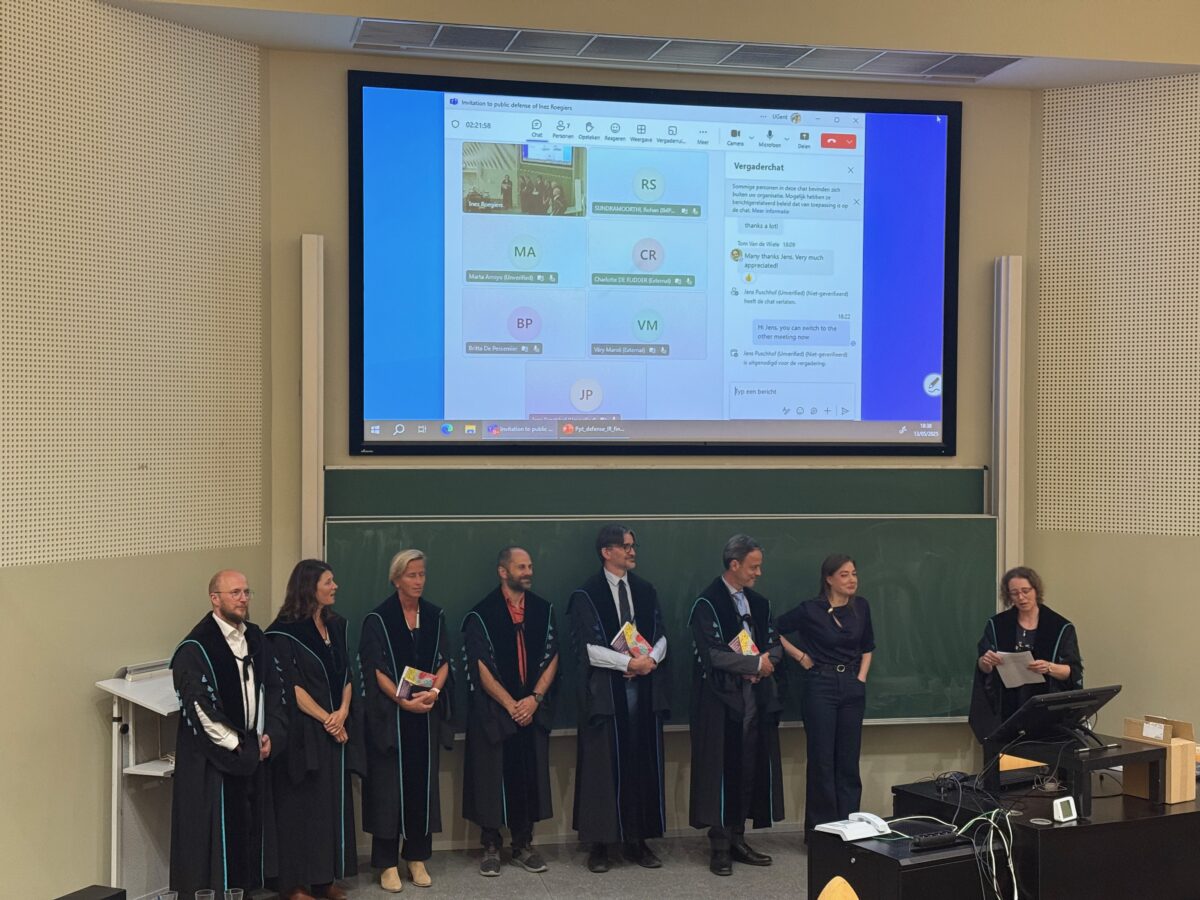The public defence, “Modelling host-microbe interactions in the small intestinal microenvironment“, will take place on the 13th of May 2025 at 17:00 in the Auditorium E1 Oehoe at Campus Coupure, Coupure Links 653, 9000 Ghent.
Abstract of the doctoral research
Host-microbe interactions in the small intestine play a fundamental role in human health, yet are challenging to study in vivo. Therefore, there is a need for improved in vitro models mimicking the intestinal microenvironment and its key players: the host epithelium and immune system, and the microbiome. Host and microbe are in constant interaction with each other in the intestine, and in order to better mimic these interactions in vitro, this research first established gelatin methacrylamide (GelMA) hydrogels as suitable scaffold materials for intestinal epithelial cells. We found that GelMA is able to support long-term intestinal epithelial cell cultures and exhibits mechanical characteristics comparable to in vivo tissue. Building further on the GelMA scaffold, we integrated a tubular GelMA structure in a custom fluidic bioreactor system, the “Gut-in-Tube,” to simulate key physiological features of the small intestine, including flow, rotation, and oxygen control. In parallel, a complementary Transwell-based co-culture model incorporating intestinal epithelial cells and macrophages was used to investigate the effects of stress-related hormones, cortisol and corticotropin-releasing factor, on epithelial barrier integrity and immune responses. Exposure to these hormones modulated the epithelial barrier and cytokine secretion in a concentration- and time-dependent manner. Additionally, co-culture experiments with synthetic bacterial communities revealed that prior exposure to cortisol could attenuate bacterial-induced inflammatory responses. Laslty, we found that host-immune respones such as gene expression of key epithelial genes and
cytokine secretion differ according to the bacterial load the host is exposed to. Altogether, we show that our co-culture model can be employed to provide new mechanistic insights into intestinal host-microbe interactions under both homeostatic and stress conditions, and contributes to the development of advanced in vitro models for gut health research.



